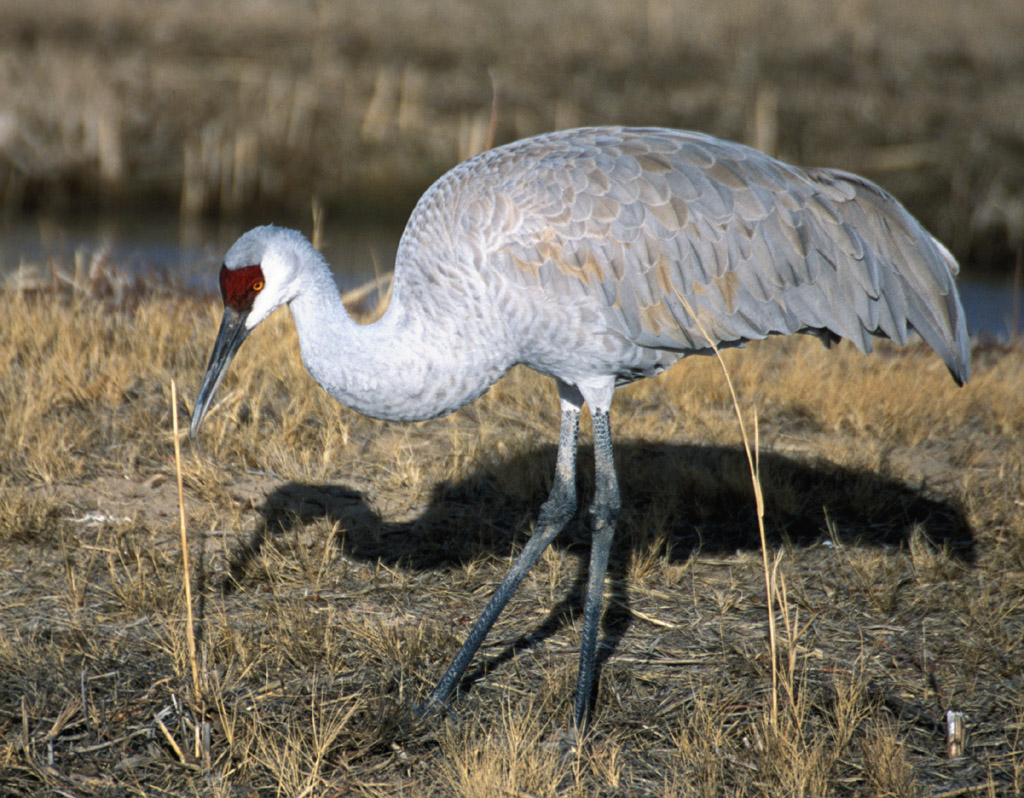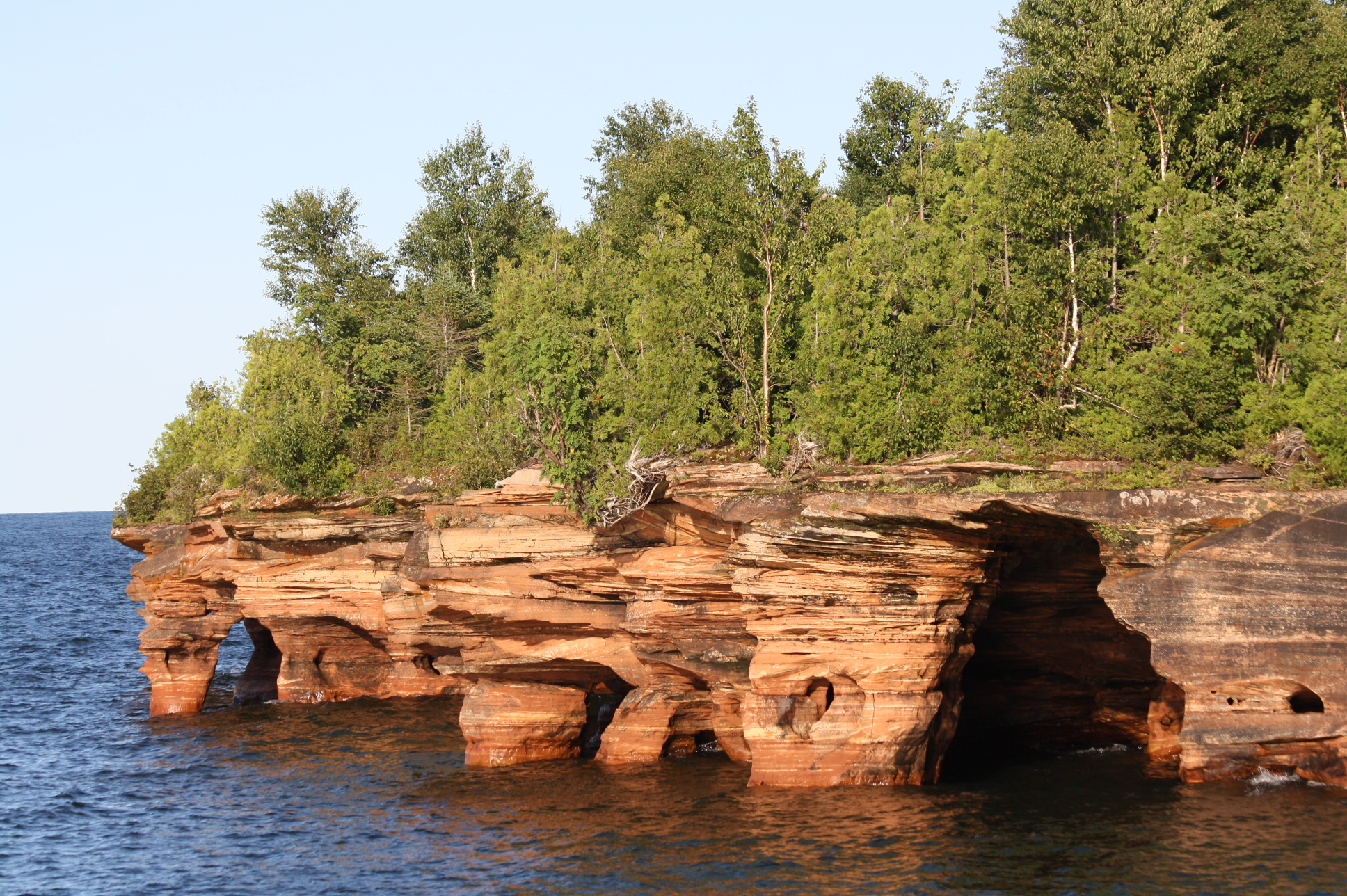|
Kechewaishke
Chief Buffalo (Ojibwe: Ke-che-waish-ke/''Gichi-weshkiinh'' – "Great-renewer" or Peezhickee/''Bizhiki'' – "Buffalo"; also French, Le Boeuf) (1759? – September 7, 1855) was a major Ojibwa leader, born at La Pointe in Lake Superior's Apostle Islands, in what is now northern Wisconsin, USA. Recognized as the principal chief of the Lake Superior Chippewa (Ojibwa) for nearly a half-century until his death in 1855, he led his nation into a treaty relationship with the United States Government. He signed treaties in 1825, 1826, 1837, 1842, 1847, and 1854. He was instrumental in resisting the United States' efforts to remove the Ojibwa to western areas and secured permanent Indian reservations for his people near Lake Superior in what is now Wisconsin. Background Political structure of the Lake Superior Ojibwa Kechewaishke was born around 1759 at La Pointe on Madeline Island (''Mooningwanekaaning'') in the Shagawamikong region. Now part of Wisconsin, La Pointe was a key Oj ... [...More Info...] [...Related Items...] OR: [Wikipedia] [Google] [Baidu] |
La Pointe, Wisconsin
La Pointe is an unincorporated community in the town of La Pointe, Ashland County, Wisconsin, United States. It is on the western shore of Madeline Island, the largest of the Apostle Islands. Downtown La Pointe is adjacent to the Madeline Island Ferry dock. La Pointe has a post office with ZIP code 54850. While the area encompassing the Town of La Pointe is made up of the entire Apostle Islands archipelago, the residents of the community live almost exclusively on Madeline Island because it is the only Apostle Island open to commercial development.Madelineisland.com The does not publish population figures specific to the unincorporated community ... [...More Info...] [...Related Items...] OR: [Wikipedia] [Google] [Baidu] |
Ojibwe
The Ojibwe, Ojibwa, Chippewa, or Saulteaux are an Anishinaabe people in what is currently southern Canada, the northern Midwestern United States, and Northern Plains. According to the U.S. census, in the United States Ojibwe people are one of the largest tribal populations among Native American peoples. In Canada, they are the second-largest First Nations population, surpassed only by the Cree. They are one of the most numerous Indigenous Peoples north of the Rio Grande. The Ojibwe population is approximately 320,000 people, with 170,742 living in the United States , and approximately 160,000 living in Canada. In the United States, there are 77,940 mainline Ojibwe; 76,760 Saulteaux; and 8,770 Mississauga, organized in 125 bands. In Canada, they live from western Quebec to eastern British Columbia. The Ojibwe language is Anishinaabemowin, a branch of the Algonquian language family. They are part of the Council of Three Fires (which also include the Odawa and Potawatomi) and ... [...More Info...] [...Related Items...] OR: [Wikipedia] [Google] [Baidu] |
Ojibwa
The Ojibwe, Ojibwa, Chippewa, or Saulteaux are an Anishinaabe people in what is currently southern Canada, the northern Midwestern United States, and Northern Plains. According to the U.S. census, in the United States Ojibwe people are one of the largest tribal populations among Native American peoples. In Canada, they are the second-largest First Nations population, surpassed only by the Cree. They are one of the most numerous Indigenous Peoples north of the Rio Grande. The Ojibwe population is approximately 320,000 people, with 170,742 living in the United States , and approximately 160,000 living in Canada. In the United States, there are 77,940 mainline Ojibwe; 76,760 Saulteaux; and 8,770 Mississauga, organized in 125 bands. In Canada, they live from western Quebec to eastern British Columbia. The Ojibwe language is Anishinaabemowin, a branch of the Algonquian language family. They are part of the Council of Three Fires (which also include the Odawa and Potawatomi) and ... [...More Info...] [...Related Items...] OR: [Wikipedia] [Google] [Baidu] |
Sandy Lake Tragedy
The Sandy Lake Tragedy was the culmination in 1850 of a series of events centered in Big Sandy Lake, Minnesota that resulted in the deaths of several hundred Lake Superior Chippewa. Officials of the Zachary Taylor Administration and Minnesota Territory sought to relocate several bands of the tribe to areas west of the Mississippi River. By changing the location for fall annuity payments, the officials intended the Chippewa to stay at the new site for the winter, hoping to lower their resistance to relocation. Due to delayed and inadequate payments of annuities and lack of promised supplies, about 400 Ojibwe, mostly men James A. Clifton, "Wisconsin Death March: Explaining the Extremes in Old Northwest In ... [...More Info...] [...Related Items...] OR: [Wikipedia] [Google] [Baidu] |
Lake Superior Chippewa
The Lake Superior Chippewa (Anishinaabe: Gichigamiwininiwag) are a large number of Ojibwe (Anishinaabe) bands living around Lake Superior; this territory is considered part of northern Michigan, Wisconsin, and Minnesota in the United States. They migrated into the area by the seventeenth century, encroaching on the Eastern Dakota people who historically occupied the area. The Ojibwe defeated the Eastern Dakota and had their last battle in 1745, after which the Dakota Sioux migrated west into the Great Plains. While sharing a common culture and Anishinaabe language, this group of Ojibwe is highly decentralized, with at least twelve independent bands in this region. In the nineteenth century, the leaders of the bands negotiated together as the Lake Superior Chippewa with the United States government under a variety of treaties to protect their historic territories against land theft by European-American settlers. The United States set up several reservations for bands in this area u ... [...More Info...] [...Related Items...] OR: [Wikipedia] [Google] [Baidu] |
Doodem
The Anishinaabe, like most Algonquian-speaking groups in North America, base their system of kinship on patrilineal clans or totems. The Ojibwe word for clan () was borrowed into English as totem A totem (from oj, ᑑᑌᒼ, italics=no or ''doodem'') is a spirit being, sacred object, or symbol that serves as an emblem of a group of people, such as a family, clan, lineage, or tribe, such as in the Anishinaabe clan system. While ''the wo .... The clans, based mainly on animals, were instrumental in traditional occupations, intertribal relations, and marriages. Today, the clan remains an important part of Anishinaabe identity. Tradition The Anishinaabe peoples are divided into a number of , or clans, (singular: ) named mainly for animal Totem, totems (or , as an Ojibwe people, Ojibwe person would say this word in English). In Ojibwe language, Anishinaabemowin, means heart. or clan literally would translate as 'the expression of, or having to do with one's heart'; in ... [...More Info...] [...Related Items...] OR: [Wikipedia] [Google] [Baidu] |
Apostle Islands
The Apostle Islands are a group of 22 islands in Lake Superior, off the Bayfield Peninsula in northern Wisconsin. The majority of the islands are located in Ashland County—only Sand, York, Eagle, and Raspberry Islands are located in Bayfield County. All the islands except for Madeline Island are part of the Apostle Islands National Lakeshore. The islands in Ashland County are all in the Town of La Pointe, except for Long Island, which is in the Town of Sanborn, while those in Bayfield County are in the Towns of Russell and Bayfield. Environment "The Apostle Islands National Lakeshore provides regionally diverse and unique plant communities."Plants . . 4 March 2008. "Over 800 plant spe ... [...More Info...] [...Related Items...] OR: [Wikipedia] [Google] [Baidu] |
Andaigweos
Andaigweos, also written as Ou-daig-weos and other variants of Ojibwa: ''Aandegwiiyaas'' (Crow's Meat), was an Ojibwe leader who lived in the ''Zhaagawaamikong'' (Chequamegon) region in present-day Wisconsin on Lake Superior during the 18th century. Andaigweos was member of the Loon doodem. He was born on Madeline Island ''Madeline'' is a media franchise that originated as a series of children's books written and illustrated by Ludwig Bemelmans, an Austrian-American author. The books have been adapted into numerous formats, spawning telefilms, television series a ... in the early 18th century. His father was from Canada (likely Sault Ste. Marie area) and moved to the western end of Lake Superior during the Ojibwe migrations of the 18th century. In his youth, the hereditary chiefs at ''Zhaagawaamikong'' were members of the Crane doodem. He was the grandfather of Chief Buffalo. Year of death missing Native American leaders Ojibwe people Year of birth unknown 18th-ce ... [...More Info...] [...Related Items...] OR: [Wikipedia] [Google] [Baidu] |
Wisconsin Historical Society
The Wisconsin Historical Society (officially the State Historical Society of Wisconsin) is simultaneously a state agency and a private membership organization whose purpose is to maintain, promote and spread knowledge relating to the history of North America, with an emphasis on the state of Wisconsin and the trans-Allegheny West. Founded in 1846 and chartered in 1853, it is the oldest historical society in the United States to receive continuous public funding. The society's headquarters are located in Madison, Wisconsin, on the campus of the University of Wisconsin–Madison. __TOC__ Organization The Wisconsin Historical Society is organized into four divisions: the Division of Library-Archives, the Division of Museums and Historic Sites, the Division of Historic Preservation-Public History, and the Division of Administrative Services. Division of Library, Archives, and Museum Collections The Division of Library-Archives collects and maintains books and documents about t ... [...More Info...] [...Related Items...] OR: [Wikipedia] [Google] [Baidu] |
Lac Courte Oreilles Band Of Lake Superior Chippewa Indians
The Lac Courte Oreilles Tribe ( oj, Odaawaa-zaaga'iganiing) is one of six federally recognized bands of Ojibwe people located in present-day Wisconsin. It had 7,275 enrolled members as of 2010. The band is based at the Lac Courte Oreilles Indian Reservation in northwestern Wisconsin, which surrounds Lac Courte Oreilles (''Odaawaa-zaaga'igan'' in the Ojibwe language, meaning "Ottawa Lake"). The main reservation's land is in west-central Sawyer County, but two small plots of off-reservation trust land are located in Rusk, Burnett, and Washburn counties. The reservation was established in 1854 by the second Treaty of La Pointe. The Lac Courte Oreille ceded land under a treaty they signed with the United States in 1837, the 1842 Treaty of La Pointe, and the first 1854 Treaty of La Pointe. The tribal reservation has a land area of , including the trust lands and a population of 2,968 persons as of the 2020 census. The most populous community is Little Round Lake, at the reservatio ... [...More Info...] [...Related Items...] OR: [Wikipedia] [Google] [Baidu] |
Henry Rowe Schoolcraft
Henry Rowe Schoolcraft (March 28, 1793 – December 10, 1864) was an American geographer, geologist, and ethnologist, noted for his early studies of Native American cultures, as well as for his 1832 expedition to the source of the Mississippi River. He is also noted for his major six-volume study of Native Americans commissioned by Congress and published in the 1850s. He served as United States Indian agent in Michigan for a period beginning in 1822. During this period, he named several newly organized counties, often creating neologisms that he claimed were derived from indigenous languages. There he married Jane Johnston, daughter of a prominent Scotch-Irish fur trader and an Ojibwe mother, who was the high-ranking daughter of Waubojeeg, a war chief. Johnston lived with her family in Sault Ste. Marie, Michigan. Johnston was bilingual and educated, having grown up in a literate household. She taught Schoolcraft the Ojibwe language and much about her maternal culture. They ... [...More Info...] [...Related Items...] OR: [Wikipedia] [Google] [Baidu] |
Anishinaabe Language
Ojibwe , also known as Ojibwa , Ojibway, Otchipwe,R. R. Bishop Baraga, 1878''A Theoretical and Practical Grammar of the Otchipwe Language''/ref> Ojibwemowin, or Anishinaabemowin, is an indigenous language of North America of the Algonquian language family.Goddard, Ives, 1979.Bloomfield, Leonard, 1958. The language is characterized by a series of dialects that have local names and frequently local writing systems. There is no single dialect that is considered the most prestigious or most prominent, and no standard writing system that covers all dialects. Dialects of Ojibwemowin are spoken in Canada, from southwestern Quebec, through Ontario, Manitoba and parts of Saskatchewan, with outlying communities in Alberta;Nichols, John, 1980, pp. 1–2. and in the United States, from Michigan to Wisconsin and Minnesota, with a number of communities in North Dakota and Montana, as well as groups that removed to Kansas and Oklahoma during the Indian Removal period. While there is some va ... [...More Info...] [...Related Items...] OR: [Wikipedia] [Google] [Baidu] |



.jpg)




